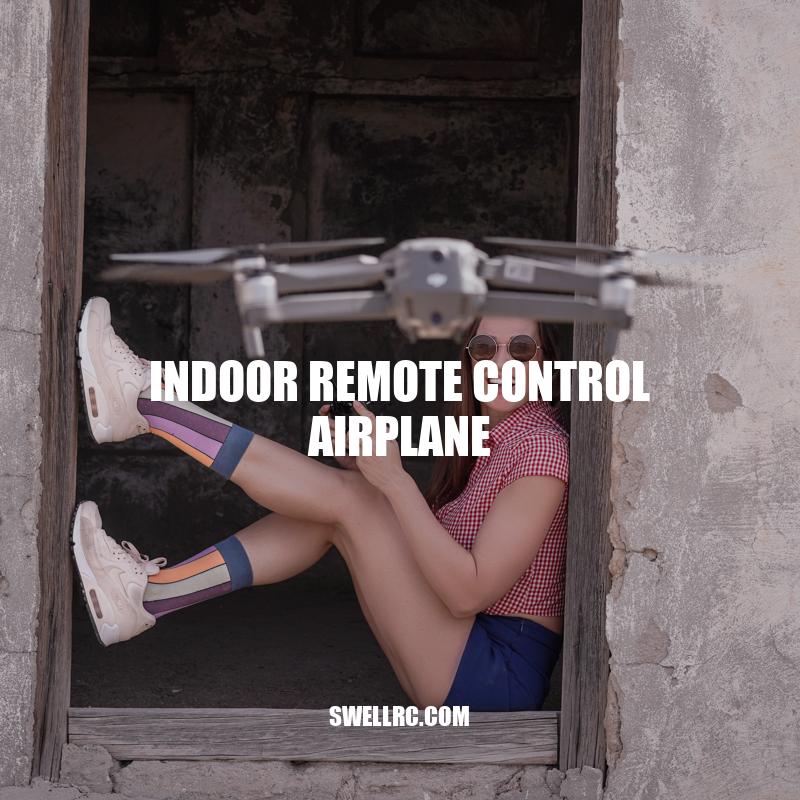Mastering Indoor Remote Control Airplanes: Tips and Techniques
Indoor remote control airplanes are a popular hobby that have been enjoyed by enthusiasts for several decades. These miniature aircraft are specifically designed to be flown indoors and have gained popularity recently due to advancements in technology that allow for better maneuverability and control. The appeal of indoor remote control airplanes is that they provide a safe and accessible way to experience the thrill of flying, without the risks and expenses of piloting a full-size airplane. Aside from being a fun and engaging hobby, indoor remote control airplanes also provide a sense of accomplishment and satisfaction when the pilot is able to master the skill of controlling their plane. There are several types of indoor remote control airplanes available in the market, each with its own unique design and features, catering to both beginners and advanced hobbyists. However, it is important to follow safety guidelines and take necessary precautions while flying these miniature planes, especially indoors. By selecting the right model, performing pre-flight checks, and practicing basic maneuvers, enthusiasts of all skill levels can enjoy this fun and challenging hobby.
Types of indoor remote control airplanes
There are several types of indoor remote control airplanes available in the market, each with its own unique design and features. Some popular models include:
- Trainer planes: These are the best choice for beginners. They are easy to handle and designed to be stable in flight.
- Acrobatic planes: These are designed for advanced pilots who want to perform stunts and aerobatics, such as loops, rolls, and inverted flying.
- Micro planes: These are the smallest indoor remote control airplanes available and are best suited for indoor flights in small spaces.
- Warbird planes: These models are designed to resemble World War II planes and are popular among collectors and enthusiasts.
There are also several websites that offer a wide range of indoor remote control airplanes and accessories. These websites provide product descriptions, customer reviews, and tips on how to choose the best model for your skill level and preferences. Some popular websites for purchasing indoor remote control airplanes include Horizon Hobby, Motion RC, and HobbyKing. Additionally, there are several forums and communities online where enthusiasts can share their experiences, ask for advice, and connect with other hobbyists.
Is a remote controlled airplane the same as a drone?
No, a remote controlled airplane is not the same as a drone. The former is controlled by a radio transmitter while the latter is unmanned and often built using sophisticated technology. RC planes are made from light materials like foam while drones are used for a variety of purposes like photography, surveillance, and delivery. For more information on drones, you can check out websites like DJI, which offer a wide selection of quality drones and information on the latest drone advancements.
Pre-flight checks
Before flying indoor remote control airplanes, it is important to perform pre-flight checks to ensure the safety of the pilot, the plane, and the surrounding area. Some components to examine during pre-flight checks include:
- Battery: Check the battery voltage and ensure that it is fully charged before the flight.
- Propellers: Check the propellers for cracks, bends, or damages and ensure that they are securely fastened to the motor.
- Electronics: Check the electronic components such as the radio transmitter and receiver for proper functioning and range.
- Control surfaces: Check the control surfaces such as the ailerons, elevator, and rudder for proper movement and alignment.
It is important to also check the airplane’s balance, especially if it has been modified or repaired recently. An imbalanced plane can cause issues during flight, such as difficulty in controlling its movement and direction. One interesting fact is that some indoor remote control airplanes come with built-in flight controllers that provide stabilization and can automatically correct the plane’s balance and orientation during flight.
Performing pre-flight checks is crucial for ensuring a smooth and safe flight. It is recommended to follow the manufacturer’s instructions for performing pre-flight checks and to consult with online forums and communities to get tips and advice from experienced pilots. The table below provides a summary of the pre-flight check process.
| Component | Action |
|---|---|
| Battery | Check voltage and charge level. |
| Propellers | Check for damages and tighten to the motor. |
| Electronics | Check for proper functioning and range. |
| Control surfaces | Check movement and alignment of ailerons, elevator, and rudder. |
| Balance | Check the plane’s balance and adjust if necessary. |
Why are pre-flight checks important?
Preflight checks are important as they aim to improve flight safety by ensuring that no crucial tasks are overlooked. Neglecting preflight checks or performing them improperly using a checklist hugely contributes to aircraft accidents. Thus, before every flight, pilots must conduct a preflight inspection in order to avoid any potential hazards.
Flying indoor remote control airplanes
Flying indoor remote control airplanes can be an exciting experience, however, it requires some skill and practice. Some tips for flying indoor remote control airplanes include:
- Start slow: It is important to start off slowly and practice basic maneuvers before attempting stunts or aerobatics.
- Choose a safe location: Choose an indoor location with enough space and avoid obstacles such as furniture, lamps, and mirrors.
- Manage the throttle: The throttle controls the power and speed of the airplane. It is important to practice managing the throttle to ensure a smooth flight.
- Avoid sudden movements: Avoid sudden movements and jerky motions as it can cause the airplane to lose control and crash.
- Maintain control: Be prepared to regain control of the airplane in case of unforeseen events such as wind gusts or equipment failure.
Techniques for maneuvering the airplanes include turning, rolling, and looping. It is important to practice each maneuver slowly and gradually increase the speed and complexity. One exciting aspect of indoor remote control airplanes is the ability to perform unique stunts and maneuvers such as inverted flight, knife-edge, and high-speed passes.
There are several online communities and websites dedicated to indoor remote control airplanes that provide tips, advice, and resources for beginners and experienced pilots. Some of these websites offer reviews of indoor remote control airplanes, as well as forums to connect with other enthusiasts. One product that has gained popularity among indoor remote control airplane enthusiasts is the Blade Inductrix FPV HD, which offers a high-quality camera and provides an immersive flying experience.
How do you fly a remote control airplane?
To fly a remote control airplane, first, ensure that the batteries in both the controller and the airplane are charged. Then, find an open, outdoor space to fly the airplane and perform a range check to make sure the signal between the controller and the airplane is strong. To take off, gradually increase the throttle and use the controller to steer the airplane. Practice in a safe area and gradually work on more advanced maneuvers as you improve your skills. There are many online resources available to help you learn to fly remote control airplanes, including instructional videos on YouTube and online forums. Additionally, there are many different types of remote control airplanes available for purchase, including beginner-friendly models that are easy to fly.
Conclusion
Indoor remote control airplanes, though small in size, can provide endless hours of entertainment and excitement. Whether you are a beginner or an experienced pilot, there’s always something new to learn and explore in this hobby. Remember to follow safety guidelines and take the necessary precautions before each flight. With practice and patience, you can master the skill of flying indoor remote control airplanes and enjoy the thrill of performing unique stunts and maneuvers. If you’re looking to try out this hobby, there are plenty of resources available online to help you get started. So what are you waiting for? Take to the skies and experience the joy of indoor remote control airplanes for yourself!



